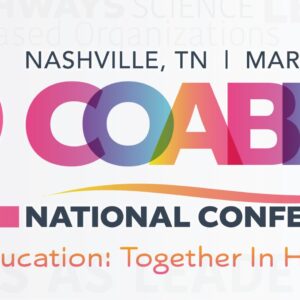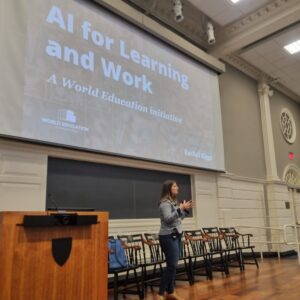by Judy Mortrude
The future of work is digital — and it’s already arriving. American workers in industries as diverse as agriculture and hospitality are increasingly required to use mobile apps, virtual reality headsets, and other digital tools to carry out their work. Even entry-level jobs such as retail stock clerk, prep cook, or tire salesperson now include responsibilities that depend on digital literacy.
Two new fact sheets have highlighted the need for digital skill building in the healthcare and manufacturing workforce. From home health aides who use apps to communicate about patients’ vital signs to manufacturing workers using augmented reality to assemble aircraft parts, the majority of jobs now require technology use.
Yet public policies that help prepare Americans to succeed in these jobs — like the federal Workforce Innovation and Opportunity Act — have not caught up. Digital literacy is too often an afterthought or simply left out of the conversation entirely. This spring, adult education and workforce advocates have a chance to change that.
Each state’s Workforce Innovation and Opportunity Act (WIOA) state plan for 2020-2023 is being readied for submission to the federal government in early March. As an advocate, it’s time to ask: Is your state prioritizing digital skills development in your workforce development strategic plan?
The public workforce system – including adult basic education – has the responsibility of supporting digital skill building within their community, especially for people with barriers to employment. This commitment to building equitable opportunity should be front and center in the collaborative planning now underway in states and localities.
WIOA requires the state workforce board, as one of its functions, to detail “the development of strategies for technological improvements to facilitate access to, and improve the quality of, services and activities provided through the one-stop delivery system, including such improvements to (A) enhance digital literacy skills…”
Unfortunately, the current WIOA planning template — the Information Collection Request form that states received from the federal government to facilitate plan development — doesn’t even include the words digital literacy or digital skills or even just plain old DIGITAL.
No matter. As a community member, you are a WIOA stakeholder and your opinion matters. Find out what YOUR state is planning by checking out your state workforce board or labor department’s website, and then submit a comment — usually as easy as sending an email — asking your state workforce board to include a strategy for building digital literacy skills for your community’s future.
Even if your state’s WIOA plan has already been finalized, you can still advocate for your workforce and adult education system to explicitly include digital literacy. It’s already an ‘allowable activity’ under federal law. And the term has been defined into two pieces of federal legislation:
The term “digital literacy skills” means the skills associated with—
(A) using technology to enable users to find, evaluate, organize, create, and communicate information; and
(B) developing digital citizenship and the responsible use of technology Section 202 of the Museum and Library Services Act (20 U.S.C. 9101).
This definition is also referenced in the Workforce Innovation and Opportunity Act (WIOA).
Learn more about how adult education and workforce advocates are supporting public investment in digital literacy by connecting with DigitalUS. DigitalUS is a newly formed coalition of 24 national organizations that have come together to ensure that all of US have the technology skills and digital resilience to thrive in work and life by 2030.




